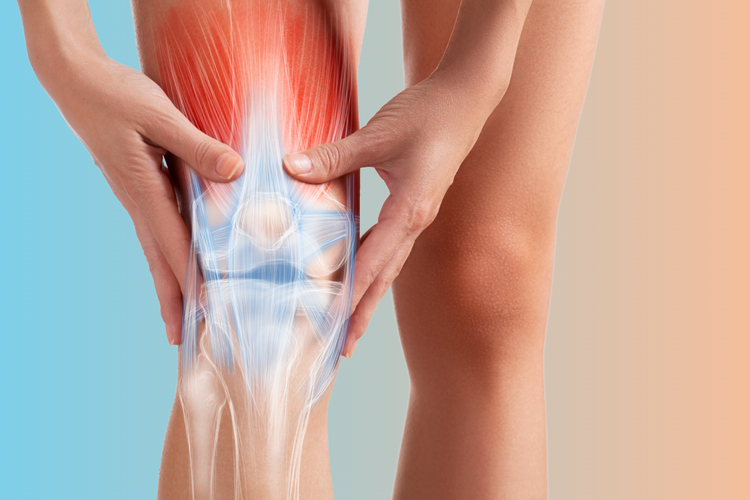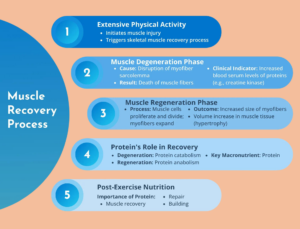
IV Therapy for Muscle Recovery
July 31, 2024
The Increasing Interest in Effective Muscle Recovery Methods
In today’s fitness-centric world, athletes and fitness enthusiasts constantly seek the most effective methods to enhance muscle recovery. Whether you’re a professional athlete or a casual gym-goer, the goal is the same: to recover quickly and efficiently, allowing you to return to peak performance as soon as possible. This has led to a growing interest in innovative recovery techniques, including IV therapy for muscle recovery.
Thesis Statement
IV therapy offers a rapid and efficient solution for muscle recovery by delivering essential nutrients directly into the bloodstream. This direct delivery method bypasses the digestive system, ensuring immediate absorption and maximum benefit, making it an increasingly popular choice among those seeking optimal recovery.
Understanding Muscle Recovery

Overview of Muscle Recovery
Importance of Muscle Recovery in Fitness and Athletic Performance
Muscle recovery is a crucial component of any fitness regimen. Proper recovery not only helps in reducing muscle soreness and fatigue but also plays a vital role in muscle growth and overall performance. Without adequate recovery, muscles cannot repair and strengthen effectively, which can lead to overtraining, injuries, and diminished performance.
Common Causes of Muscle Fatigue and Soreness
Muscle fatigue and soreness are common experiences for anyone engaging in physical activity, particularly intense workouts or prolonged physical exertion. These symptoms occur due to microscopic damage to muscle fibers during exercise, which results in inflammation and the build-up of waste products like lactic acid. Factors contributing to muscle fatigue and soreness include:
- Intense Workouts: High-intensity exercises, weightlifting, and endurance training can cause significant muscle strain.
- Physical Exertion: Activities such as running, cycling, and sports that require continuous physical effort.
- Inadequate Rest: Not allowing enough time for muscles to recover between workouts.
- Poor Nutrition: Lack of essential nutrients needed for muscle repair and recovery.
Traditional Muscle Recovery Methods
Rest and Sleep
Rest and sleep are fundamental to muscle recovery. During sleep, the body undergoes various restorative processes, including the release of growth hormone, which aids in muscle repair and growth. Ensuring adequate sleep each night is essential for effective recovery.
Hydration
Proper hydration is vital for maintaining muscle function and preventing cramps and fatigue. Water helps transport nutrients to muscles and remove waste products. Drinking sufficient fluids before, during, and after exercise is crucial for optimal muscle recovery.
Nutrition
A balanced diet rich in proteins, carbohydrates, and healthy fats provides the building blocks for muscle repair. Proteins are particularly important as they supply amino acids necessary for rebuilding muscle fibers. Carbohydrates replenish glycogen stores depleted during exercise, while fats support overall energy levels.
Physical Therapy and Massage
Physical therapy and massage can significantly enhance muscle recovery by improving blood flow, reducing muscle tension, and promoting relaxation. Techniques such as deep tissue massage, myofascial release, and stretching can alleviate muscle soreness and accelerate the healing process.
By integrating traditional muscle recovery methods with advanced treatments like IV therapy for muscle recovery, individuals can achieve faster and more effective results, ensuring they stay at the top of their game.
The Science Behind IV Therapy for Muscle Recovery
What is IV Therapy?
Definition and Process
IV therapy, or intravenous therapy, is a medical treatment that involves administering fluids, electrolytes, vitamins, and other essential nutrients directly into the bloodstream through a vein. This method ensures that these vital components bypass the digestive system, leading to immediate absorption and utilization by the body. IV therapy is commonly used in hospitals and clinics for rehydration, nutrient delivery, and medication administration.
How IV Therapy Bypasses the Digestive System for Immediate Absorption
One of the key advantages of IV therapy for muscle recovery is its ability to bypass the digestive system. When nutrients are consumed orally, they must pass through the gastrointestinal tract, where they are broken down and absorbed into the bloodstream. This process can be slow and inefficient, especially if the digestive system is compromised or if large amounts of nutrients are required quickly.
In contrast, IV therapy delivers nutrients directly into the bloodstream, providing immediate availability to tissues and cells. This direct delivery method allows for higher concentrations of nutrients to be administered rapidly, which is particularly beneficial for muscle recovery. Athletes and fitness enthusiasts can experience quicker relief from muscle fatigue and soreness, as the body receives the essential components it needs for repair and recovery without delay.
Key Components of IV Therapy for Muscle Recovery

Electrolytes
Electrolytes are essential minerals, such as sodium, potassium, calcium, and magnesium, that play a crucial role in maintaining fluid balance, nerve function, and muscle contractions. During intense physical activity, the body loses electrolytes through sweat, which can lead to imbalances and muscle cramps. IV therapy replenishes these electrolytes quickly, helping to restore balance and support muscle function and recovery.
Amino Acids
Amino acids are the building blocks of proteins, which are vital for muscle repair and growth. When muscles are subjected to strenuous exercise, they undergo microscopic damage that requires amino acids for repair. Essential amino acids, such as leucine, isoleucine, and valine (branched-chain amino acids or BCAAs), are particularly important for promoting muscle protein synthesis and reducing muscle breakdown. IV therapy can deliver these amino acids directly to the muscles, accelerating the recovery process and supporting muscle growth.
Vitamins and Minerals
Vitamins and minerals play a critical role in various metabolic processes that are essential for muscle recovery. Key vitamins and minerals included in IV therapy for muscle recovery are:
- Vitamin C: A powerful antioxidant that reduces inflammation, supports collagen production, and enhances immune function.
- B-Complex Vitamins: A group of vitamins (including B1, B2, B3, B5, B6, B7, B9, and B12) that are crucial for energy production, red blood cell formation, and nervous system health.
- Magnesium: An essential mineral involved in muscle relaxation, energy production, and protein synthesis. Magnesium also helps to prevent muscle cramps and spasms.
Antioxidants
Antioxidants are compounds that help to neutralize free radicals, which are harmful molecules produced during intense physical activity. Free radicals can cause oxidative stress and damage to muscle cells, leading to inflammation and delayed recovery. IV therapy often includes antioxidants such as glutathione, which protect cells from oxidative damage, reduce inflammation, and promote faster muscle recovery.
Benefits of IV Therapy for Muscle Recovery

Rapid Rehydration
Importance of Maintaining Fluid Balance
Maintaining fluid balance is critical for overall health and optimal muscle function. Dehydration can impair muscle performance, increase the risk of cramps, and delay recovery. During exercise, especially in hot and humid conditions, the body loses a significant amount of water through sweat. Rapid rehydration is essential to restore fluid levels, support cellular functions, and maintain muscle performance.
How IV Therapy Provides Immediate Hydration
IV therapy provides immediate hydration by delivering fluids directly into the bloodstream. This method ensures that the body quickly receives the necessary fluids to rehydrate cells and tissues, bypassing the slower process of oral hydration. IV hydration can be particularly beneficial after intense workouts or competitions, where rapid fluid replacement is crucial for recovery and performance.
Nutrient Delivery
Role of Electrolytes in Muscle Function and Recovery
Electrolytes are vital for maintaining the electrical gradients across cell membranes, which are necessary for muscle contractions and nerve impulses. During exercise, the loss of electrolytes through sweat can lead to muscle cramps, weakness, and fatigue. IV therapy replenishes electrolytes quickly, helping to restore normal muscle function and prevent cramps, thereby supporting muscle recovery.
Importance of Amino Acids in Muscle Repair and Growth
Amino acids are essential for repairing the micro-tears in muscle fibers caused by exercise. They promote muscle protein synthesis, which is the process of building new muscle proteins to replace damaged ones. By delivering amino acids directly into the bloodstream, IV therapy ensures that muscles receive an immediate supply of these critical building blocks, accelerating repair and growth.
Benefits of Vitamins and Antioxidants in Reducing Inflammation and Oxidative Stress
Vitamins and antioxidants play a crucial role in reducing inflammation and oxidative stress, both of which can impair muscle recovery. Vitamin C and other antioxidants included in IV therapy help to neutralize free radicals, reduce inflammation, and protect muscle cells from damage. This support enhances the body’s natural healing processes and promotes faster recovery.
Enhanced Recovery and Performance
Reduction in Muscle Soreness and Fatigue
IV therapy can significantly reduce muscle soreness and fatigue by providing rapid rehydration and delivering essential nutrients directly to the muscles. The immediate availability of fluids, electrolytes, amino acids, and antioxidants helps to alleviate the symptoms of muscle damage and support the recovery process.
Faster Recovery Times
By bypassing the digestive system and delivering nutrients directly into the bloodstream, IV therapy ensures that the body receives what it needs for recovery without delay. This leads to faster recovery times, allowing athletes and fitness enthusiasts to return to their training and activities sooner.
Improved Overall Athletic Performance
Regular use of IV therapy for muscle recovery can lead to improved overall athletic performance. By maintaining optimal hydration, electrolyte balance, and nutrient levels, athletes can train harder, recover faster, and perform at their best. IV therapy provides a comprehensive approach to muscle recovery, supporting both short-term recovery and long-term performance gains.
By integrating IV therapy into their recovery routine, athletes and fitness enthusiasts can experience significant improvements in muscle recovery, performance, and overall well-being.
Frequency and Timing
Recommended Frequency of IV Therapy Sessions
The recommended frequency of IV therapy sessions for muscle recovery is typically bi-weekly. This frequency allows for consistent replenishment of essential nutrients without overloading the body. Regular bi-weekly sessions can help maintain optimal hydration and nutrient levels, supporting ongoing recovery and performance (LifeWell MD).
Optimal Timing for IV Therapy in Relation to Workouts and Competitions
Timing is crucial for maximizing the benefits of IV therapy. The optimal time to receive IV therapy for muscle recovery is within 24 to 48 hours after intense physical activity. This timing ensures rapid replenishment of fluids and nutrients, aiding in faster recovery. Additionally, receiving an IV drip a day before a major workout or competition can help ensure that the body is fully hydrated and stocked with essential nutrients, providing a competitive edge.
Summary of Benefits
IV therapy for muscle recovery offers a myriad of benefits that support athletes and fitness enthusiasts in achieving their performance goals. By delivering essential nutrients directly into the bloodstream, IV therapy ensures rapid absorption and immediate availability, bypassing the slower digestive process. This direct approach results in several key advantages:
- Rapid Rehydration: IV therapy provides immediate rehydration by quickly replenishing lost fluids and electrolytes. This is crucial for maintaining fluid balance, preventing muscle cramps, and enhancing overall performance.
- Efficient Nutrient Delivery: Essential nutrients such as amino acids, vitamins, and minerals are delivered directly to muscle cells, promoting faster repair and growth. This is particularly beneficial for reducing muscle soreness and fatigue after intense physical activity.
- Enhanced Recovery Times: By providing a concentrated dose of nutrients, IV therapy accelerates the recovery process, allowing athletes to return to their training routines more quickly. This leads to improved performance and sustained training efforts.
- Reduced Inflammation and Oxidative Stress: The inclusion of antioxidants in IV therapy helps to combat oxidative stress and reduce inflammation, further supporting muscle recovery and overall health.
If you’re looking for an effective way to enhance your muscle recovery, consider incorporating IV therapy into your routine. The tailored treatments offered by Uplift IV & Wellness can provide the rapid hydration and essential nutrients needed to support optimal recovery and performance.
To book a session with Uplift IV & Wellness, visit their website and schedule an appointment online or over the phone. Experience the benefits of customized IV therapy and take your muscle recovery to the next level.